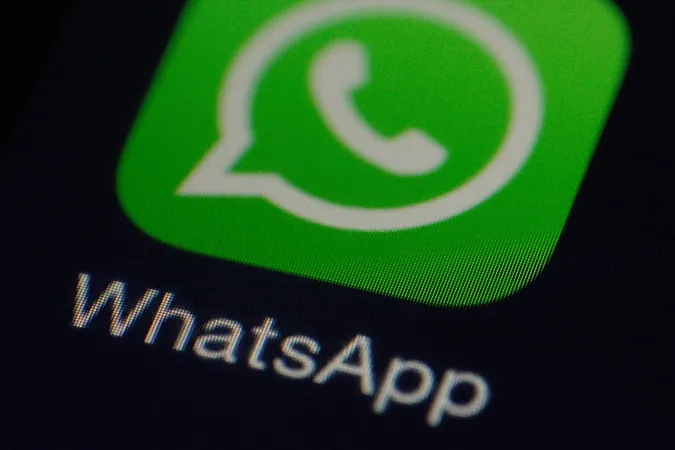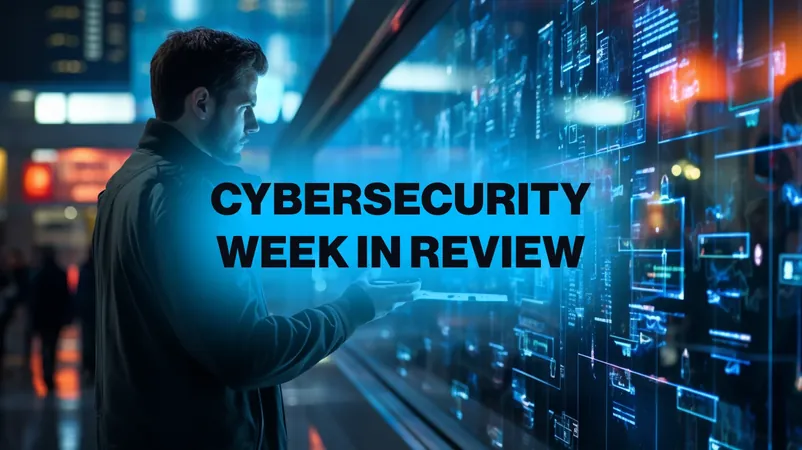
The Battle for Privacy: How Researchers are Fortifying Your Messages Against Spies
2025-05-05
Author: Sarah
Unraveling the Myth of Secure Messaging
When you hit send on WhatsApp or iMessage, it feels like a private conversation—just you and your recipient, right? Well, thanks to end-to-end encryption (E2EE), that's mostly the case, but cybersecurity expert Dr. Nitesh Saxena from Texas A&M University warns there’s more to the story.
Meet the SPIES Lab
Dr. Saxena runs the SPIES Lab, a hub for innovation focused on secure messaging and calling technologies. SPIES stands for Security and Privacy in Emerging Computing and Networking Systems. Saxena and his team delve into popular apps like Signal, WhatsApp, and Telegram to uncover vulnerabilities and suggest enhancements. Their groundbreaking research is proudly featured in the Proceedings of the Fourteenth ACM Conference on Data and Application Security and Privacy.
The Power and Pitfalls of End-to-End Encryption
E2EE is your digital armor, ensuring that only you and your intended message recipient can read what you’ve sent. Not even tech giants like Meta or Apple can intercept your conversations. However, as Dr. Saxena points out, this encryption is particularly crucial in countries with oppressive surveillance regimes. "In places like China and Saudi Arabia, apps like Signal are either banned or severely restricted as governments resist being locked out from surveillance," he explains.
The Cracks in the Fortress
While these apps may shield you from casual snooping, the threat from more sophisticated hacking methods remains. Enter the 'man-in-the-middle' attack—where a hacker impersonates your contact to intercept messages. To counter this, many apps use what Saxena terms "authentication ceremonies." This process relies on users confirming each other’s identity, but shockingly, many skip or mishandle these crucial steps.
Redesigning User Verification for Robust Security
Dr. Saxena's team is analyzing where users stumble during these authentications to develop more intuitive verification tools. Imagine a one-button solution that automatically verifies your contacts—this is the future Saxena envisions.
The Human Element: Errors in Group Chats
Mistakes in group chats often stem from user oversight, particularly when members are identified only by numbers, lacking names or images. To combat this, Saxena's lab is experimenting with design improvements that display profile pictures of all chat participants before sending a message.
Encryption: A Political Battlefield
The issue of encryption extends beyond tech; it’s drenched in politics. Law enforcement pushes for access to encrypted messages, proposing methods like "client-side scanning" to flag illegal content before messages are encrypted. However, Saxena warns that introducing any backdoor could open the floodgates for abuse by hackers or corporations.
Innovation in Encrypted Communication
To sidestep these pitfalls, Saxena's lab is developing encrypted keyboards that prevent unauthorized scanning right from the start.
The Dilemma of Device Synchronization
In a world where we juggle conversations across phones, tablets, and laptops, ensuring secure message syncing presents a unique challenge. "Syncing messages without compromising security is tough," Saxena admits. Currently used methods like QR codes can be vulnerable, but his team is pioneering new cryptographic techniques for safer interactions.
AI to the Rescue—Without Invading Privacy
Looking to the future, artificial intelligence could revolutionize how we communicate—think smart replies and spam filters. But how can AI analyze your messages without seeing them? Saxena is on it! His team is working on efficient multi-party computation methods that allow computing over encrypted messages while keeping your data private.
Towards a Safer Digital Future
Ultimately, Dr. Saxena stresses that no matter how strong our encryption becomes, it can’t protect us from human error or corporate negligence. So, while he champions the use of secure apps like Signal and WhatsApp, he urges us to remain vigilant. “Always verify your contacts if the app offers it. It’s a small step that can make a big difference.”




 Brasil (PT)
Brasil (PT)
 Canada (EN)
Canada (EN)
 Chile (ES)
Chile (ES)
 Česko (CS)
Česko (CS)
 대한민국 (KO)
대한민국 (KO)
 España (ES)
España (ES)
 France (FR)
France (FR)
 Hong Kong (EN)
Hong Kong (EN)
 Italia (IT)
Italia (IT)
 日本 (JA)
日本 (JA)
 Magyarország (HU)
Magyarország (HU)
 Norge (NO)
Norge (NO)
 Polska (PL)
Polska (PL)
 Schweiz (DE)
Schweiz (DE)
 Singapore (EN)
Singapore (EN)
 Sverige (SV)
Sverige (SV)
 Suomi (FI)
Suomi (FI)
 Türkiye (TR)
Türkiye (TR)
 الإمارات العربية المتحدة (AR)
الإمارات العربية المتحدة (AR)